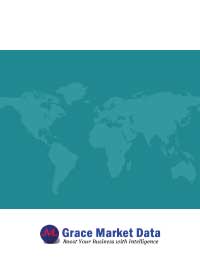Asia Pacific smart water bottle market will grow by 22.1% annually with a total addressable market cap of $96.6 million over 2020-2030 due to the fast adoption of smart bottles in the region.
Highlighted with 31 tables and 48 figures, this 105-page report “Asia Pacific Smart Water Bottle Market 2020-2030 by Component, Material, Feature, Capacity, Distribution Channel, and Country: Trend Forecast and Growth Opportunity” is based on a comprehensive research of the entire Asia Pacific smart water bottle market and all its sub-segments through extensively detailed classifications. Profound analysis and assessment are generated from premium primary and secondary information sources with inputs derived from industry professionals across the value chain. The report is based on studies on 2015-2019 and provides forecast from 2020 till 2030 with 2019 as the base year. (Please note: The report will be updated before delivery so that the latest historical year is the base year and the forecast covers at least 5 years over the base year.)
In-depth qualitative analyses include identification and investigation of the following aspects:
- Market Structure
- Growth Drivers
- Restraints and Challenges
- Emerging Product Trends & Market Opportunities
- Porter’s Fiver Forces
The trend and outlook of Asia Pacific market is forecast in optimistic, balanced, and conservative view by taking into account of COVID-19. The balanced (most likely) projection is used to quantify Asia Pacific smart water bottle market in every aspect of the classification from perspectives of Component, Material, Feature, Capacity, Distribution Channel, and Country.
Based on Component, the Asia Pacific market is segmented into the following sub-markets with annual revenue for 2019-2030 included in each section.
- In-built
- Hardware
- Software and Apps
Based on Material, the Asia Pacific market is segmented into the following sub-markets with annual revenue for 2019-2030 included in each section.
- Metal
- Polymer
- Other Materials
Based on Feature, the Asia Pacific market is segmented into the following sub-markets with annual revenue for 2019-2030 included in each section.
- Leak-proof
- Straw
Based on Capacity, the Asia Pacific market is segmented into the following sub-markets with annual revenue for 2019-2030 included in each section.
- < 20 oz
- 20-29 oz
- 30-39 oz
- > 39 oz
Based on Distribution Channel, the Asia Pacific market is segmented into the following sub-markets with annual revenue for 2019-2030 included in each section.
- Online Sales
- Hypermarkets & Supermarkets
- Specialty Stores
- Retail Stores
- Other Distribution Channels
Geographically, the following national/local markets are fully investigated:
- Japan
- China
- South Korea
- Australia
- India
- Rest of APAC (further segmented into Malaysia, Singapore, Indonesia, Thailand, New Zealand, Vietnam, and Sri Lanka)
For each aforementioned country, detailed analysis and data for annual revenue are available for 2019-2030. The breakdown of key national markets by Component, Material, and Capacity over the forecast years are also included.
The report also covers current competitive scenario and the predicted trend; and profiles key vendors including market leaders and important emerging players.
Specifically, potential risks associated with investing in Asia Pacific smart water bottle market are assayed quantitatively and qualitatively through GMD’s Risk Assessment System. According to the risk analysis and evaluation, Critical Success Factors (CSFs) are generated as a guidance to help investors & stockholders identify emerging opportunities, manage and minimize the risks, develop appropriate business models, and make wise strategies and decisions.
Key Players (this may not be a complete list and extra companies can be added upon request):
Adheretech
Caktus, Inc.
Ecomo
Groking Lab Limited
Hidrate Inc.
HydraCoach, Inc.
Hydrasmart
Kuvee
Myhydrate
Out of Galaxy, Inc.
Sippo
Spritz
Thermos L.L.C
Trago, Inc.
(Please note: The report will be updated before delivery so that the latest historical year is the base year and the forecast covers at least 5 years over the base year.)



